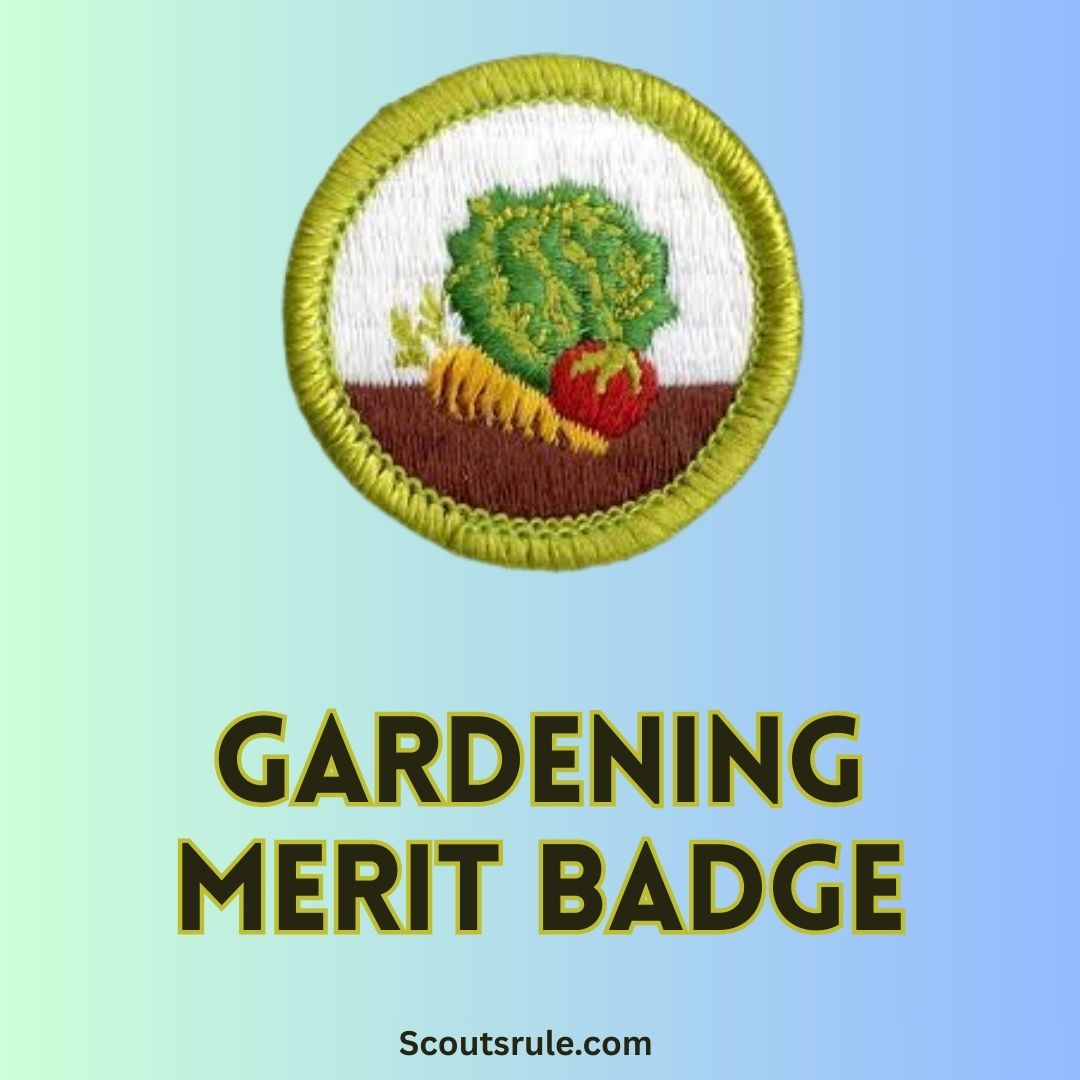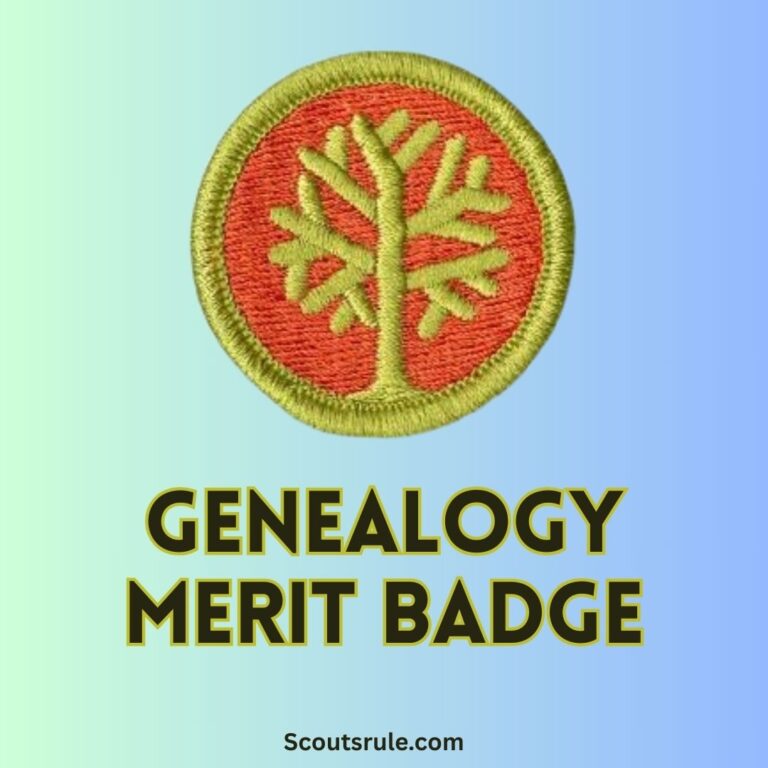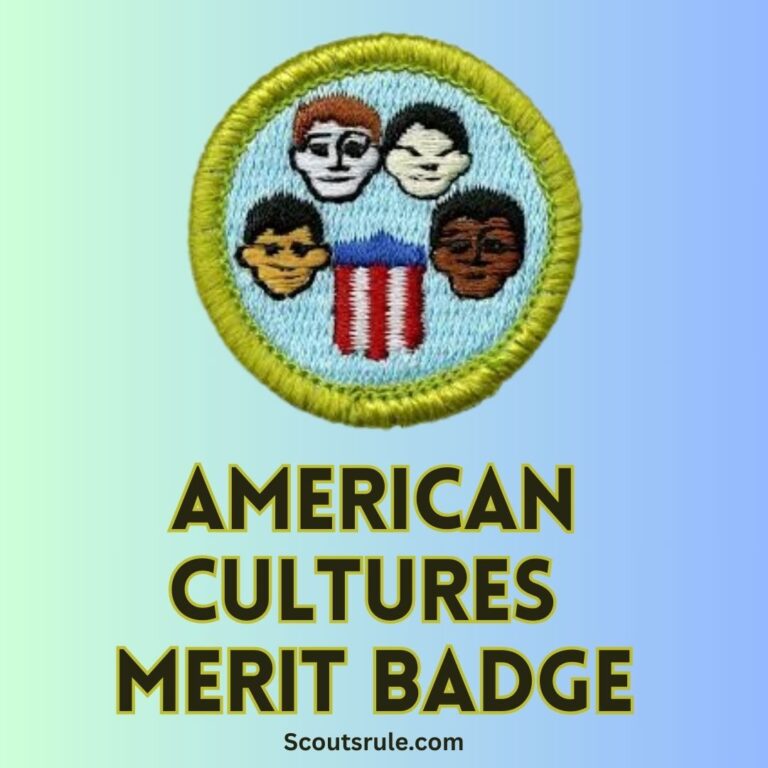
This guide is intended to help you understand the purpose and requirements of the badge, offer detailed project ideas and safety suggestions, and provide strategies for research, documentation, and self‑reflection as you explore the fascinating world of gardening. Please note that this guide is a resource meant to complement the official Boy Scouts of America merit badge pamphlet. Always work closely with your merit badge counselor and refer to the current official requirements while developing your projects.
Post Contents
- Introduction: The Joy and Importance of Gardening
- 2. Purpose and Objectives of the Gardening Merit Badge
- 3. Gardening Basics: Understanding Plants and Their Needs
- 4. Garden Safety and Health Practices
- 5. Planning Your Garden
- 6. Gardening Projects and Hands‑On Activities
- 7. Documentation, Record Keeping, and Presentation Strategies
- 8. Optional Projects and Extensions
- 9. Additional Resources, Tips, and Career Connections
- 10. Conclusion: Gardening for a Sustainable Future
Introduction: The Joy and Importance of Gardening
Gardening is both an art and a science. It involves nurturing life from a seed to a flourishing plant and offers tangible rewards—from the beauty of blooming flowers and thriving vegetables to the personal satisfaction of creating a sustainable, living space. The Gardening Merit Badge is an invitation to immerse yourself in nature. Through hands‑on activities, you learn about plant biology, soil science, and environmental stewardship. More than just a practical skill, gardening can expand your understanding of sustainable living, the origins of food, and the importance of caring for the environment.
As you embark on this merit badge journey, you will engage in activities like visiting libraries or garden centers, researching soil and water conservation, growing a variety of plants, and even planning and maintaining a garden. By developing a well‑rounded understanding of gardening, you will be able to apply these skills to not only meet Scouting requirements but also to foster a lifelong passion for the natural world.
2. Purpose and Objectives of the Gardening Merit Badge
The Gardening Merit Badge aims to:
- Educate You About Plant Science: Learn the fundamental principles of plant growth and the factors that influence the health and productivity of a garden.
- Promote Environmental Stewardship: Understand how gardening contributes to environmental sustainability by conserving water, supporting biodiversity, and promoting organic growing practices.
- Develop Practical Gardening Skills: Gain experience in planning a garden, preparing soil, planting, watering, and caring for various plants. Learn how to deal with pests and diseases using environmentally friendly methods.
- Enhance Research and Documentation Skills: Practice structuring your research, keeping detailed records of your activities, and reflecting on your experiences. This will help you become a methodical and conscientious learner.
- Foster a Love of Nature: Experience the joys of working outdoors, nurturing plants, and witnessing the cycles of growth and renewal—a passion that can lead to lifelong learning and a deeper connection with the environment.
By achieving these objectives, you demonstrate a commitment to sustainable living, develop self-reliance, and gain skills that are not only applicable to gardening but also to everyday life and future careers in agriculture, environmental science, or horticulture.
3. Gardening Basics: Understanding Plants and Their Needs
3.1 Soil: The Foundation of a Garden
Soil is the living medium that supports plant life. Its health and composition are critical to garden success.
- Composition: Soil consists of minerals, organic matter, water, and air. It can be sandy, clayey, or loamy. Each type has different drainage, nutrient holding, and water retention properties.
- Soil Preparation: Proper preparation of your garden soil includes tilling, adding organic compost, and testing pH levels. These steps ensure that plants have access to the nutrients they need.
3.2 Sunlight, Water, and Climate Requirements
Light, water, and temperature are vital for plant growth.
- Sunlight: Most garden plants require a specific amount of sunlight. Learn how to assess your garden’s exposure, ensuring that you understand which areas receive full sun, partial sun, or shade.
- Watering: Overwatering or underwatering can harm plants. Develop practices for proper irrigation and learn to utilize mulches and organic matter to conserve moisture.
- Climate: Consider the local climate and seasonal changes. Know the planting seasons for different vegetables and flowers, and plan your garden accordingly.
3.3 Plant Nutrients and Fertilizer
- Nutrients: Plants require nitrogen, phosphorus, and potassium (the N-P-K ratio), among other micro-nutrients.
- Fertilization: Understanding how to supplement soil nutrients—whether through organic compost or chemical fertilizers—is essential for healthy plant growth.
- Crop Rotation: Utilize crop rotation practices to avoid depleting soil nutrients and to reduce disease buildup.
A solid understanding of these gardening basics sets the stage for successful planting and garden maintenance throughout your badge project.
4. Garden Safety and Health Practices
Working outdoors and handling garden tools presents certain hazards, and safety is paramount in all gardening activities.
4.1 Identifying Hazards in the Garden
- Physical Hazards: Cuts from tools such as spades, rakes, and pruning shears; abrasions from rough soil or plants; and potential injuries from falling or tripping in uneven terrain.
- Exposure Hazards: Sunburn, heat exhaustion, or allergic reactions to plants and insect bites.
- Chemical Exposure: Risks associated with pesticides, herbicides, and fertilizers if not handled carefully.
4.2 Personal Protection and First-Aid Measures
- Protective Clothing: Wear gloves, long sleeves, a hat, and sunscreen. Sturdy footwear can help prevent injuries from sharp objects or uneven terrain.
- Tool Safety: Always use tools carefully, keep them sharp (which is safer than dull tools), and store them properly when not in use.
- First-Aid Preparedness: Keep a first-aid kit nearby. Learn basic first-aid for cuts, scrapes, insect bites, or heat-related issues.
- Hydration: Always carry water, especially when working on a hot day. Recognize the signs of dehydration or heat exhaustion and take breaks in the shade when needed.
Record your safety precautions in your project documentation, and be prepared to explain how you protect yourself and others while gardening.
5. Planning Your Garden
A successful garden requires thoughtful planning, from design to plant selection to ongoing maintenance.
5.1 Designing a Garden Layout
- Sketch a Plan: Draw a detailed layout of your garden. Include measurements, placement of different plant types, pathways, and irrigation systems.
- Crop Arrangement: Consider companion planting to maximize space and reduce pest problems. Research which plants benefit each other when planted nearby.
- Seasonal Considerations: Plan for seasonal changes. Understand which plants to grow in different seasons and plan succession plantings to maximize productivity.
5.2 Selecting Vegetables, Flowers, and Other Plants
- Choosing Varieties: Select crops and flowers that are well-suited to your local climate and soil conditions. Examples might include tomatoes, carrots, basil, marigolds, or sunflowers.
- Starting From Seed and Seedlings: Grow at least six vegetables (three from seeds and three from seedlings) and six flowers (three from seeds and three from seedlings) through various growth stages. This requirement gives you hands-on experience with germination, transplanting, and nurturing plant growth.
- Documenting Growth: Record dates for when seeds are sown, when seedlings are transplanted, and when plants are harvested or start to flower. Photograph your garden at key milestones.
5.3 Garden Tools and Equipment
- Basic Equipment: Familiarize yourself with common gardening tools such as hoes, rakes, shovels, trowels, and watering cans. Explain their functions and why each is essential.
- Specialized Equipment: You might mention optional equipment like a wheelbarrow, garden forks, or irrigation systems. Consider how modern tools can make planting and maintenance more efficient.
- Workspace Organization: Establish a clear, safe, and efficient workspace in your garden. Keeping your tools organized reduces hazards and improves efficiency during planting and maintenance.
6. Gardening Projects and Hands‑On Activities
Practical experience is key to earning the Gardening Merit Badge. Engage in hands‑on projects that challenge you to apply what you learn while documenting your progress.
6.1 Growing Vegetables and Flowers
- Vegetable Growth: Plant six vegetables: three from seeds and three from seedlings. Document the germination process, record growth rates, and note any challenges such as pests or water issues. Maintain a chart of growth milestones.
- Flower Growth: Similarly, plant six flowers: three started from seeds and three from seedlings. Track when each flower blooms and how the garden evolves over the growing season.
- Harvesting and Observation: Record the harvest dates, yield, and any differences between plants grown from seeds versus seedlings. Reflect on what practices led to better growth or health in your plants.
6.2 Additional Garden Projects
- Herb or Kitchen Garden: Consider growing a small herb garden where you document the benefits of aromatic plants like basil, mint, and rosemary. Explain how components like soil quality and watering techniques affect herb growth.
- Pest Control: Experiment with organic pest control methods. Research and implement techniques such as companion planting, use of natural repellents (e.g., neem oil), or encouraging beneficial insects. Record results in your garden log.
- Water Conservation: Create a mini project focusing on efficient irrigation. Explore drip irrigation or mulching methods to reduce water evaporation. Record any improvements in plant health or reduction in water usage.
7. Documentation, Record Keeping, and Presentation Strategies
Keeping detailed records of your gardening journey is crucial:
7.1 Keeping a Gardening Journal and Portfolio
- Daily/Weekly Journal: Record what you did, what you observed, and reflect on the outcomes (weather conditions, growth stages, pest issues, etc.).
- Photographs and Sketches: Capture images of your garden at various stages. Annotate sketches to show how layout, plant spacing, and water distribution vary over time.
- Data Logs: Use tables or charts to track the growth of your vegetables and flowers, compare yields, or note watering frequencies and soil amendments.
- Structured Portfolio: Keep a binder or digital folder with sections for each requirement. Include your journal entries, photographs, diagrams, and final summaries.
7.2 Preparing a Final Presentation
- Presentation Format: The final presentation may be a slideshow, poster, or video summarizing your garden’s progress, what you learned from your activities, and your reflections on sustainable gardening practices.
- Content: Include an introduction to your garden design, challenges faced, successes achieved, and suggestions for future improvements.
- Practice: Rehearse your presentation, ensuring you can clearly convey your process, the importance of safety and environmental stewardship, and the lessons you’ve learned.
8. Optional Projects and Extensions
If you want to explore further, consider these optional challenges:
8.1 Exploring Composting and Soil Enrichment
- Composting: Create a compost pile or bin to recycle organic waste from your garden. Learn how the composting process works, monitor the temperature and moisture levels, and document how your homemade compost enriches the soil.
- Soil Testing: Use affordable soil testing kits to measure pH and nutrient content before and after adding compost. Analyze the effects on plant growth.
8.2 Visiting a Local Garden or Botanical Center
- Field Trip: Visit a botanical garden, community garden, or an agricultural research center. Observe different gardening techniques and how professionals manage large-scale gardens.
- Interview: Speak with a horticulturist or garden manager. Ask about challenges, innovative practices, or recommendations for someone beginning a garden.
8.3 Creating a Miniature Garden Model
- Model Building: Build a scale model of an ideal garden using materials like clay, miniature plants, and natural elements. This project helps you translate theory into a creative, hands‑on design exercise.
Document your optional projects with photos, data logs, and reflective journal entries. They serve as a great bonus to your overall merit badge portfolio.
9. Additional Resources, Tips, and Career Connections
Additional Tips
- Read and Research: Look for gardening books, magazines, and online articles. Websites of local extension services or botanical gardens offer practical advice and inspirational ideas.
- Join Gardening Forums or Clubs: Interacting with experienced gardeners in person or online can provide additional tips, encourage community interaction, and expand your knowledge base.
- Stay Organized: Plan and document your gardening activities in advance. Consistency is key for tracking plant growth and overall progress.
- Reflect Regularly: Take time to reflect on your successes and challenges. What can be improved? How do weather conditions affect your garden? These reflections will help guide you in future gardening projects.
Resources
- Local Library and Garden Center: Visit your local library for gardening books and magazines. Garden centers often host workshops or provide free advice.
- Online Tools: Use websites like the U.S. Department of Agriculture, local cooperative extension services, or dedicated gardening blogs for the latest research and practical guides.
- Educational Videos: YouTube channels on gardening, organic farming, and sustainable gardening can provide visual demonstrations of techniques described in your guide.
- Local Experts: Consider speaking with a local gardener, horticulturist, or member of your community garden. Their insights can help clarify experiments and offer real‑world applications.
Career Connections
Gardening can lead to several career paths and lifelong hobbies, including:
- Horticulture and Landscape Architecture: Designing, managing, and beautifying outdoor spaces.
- Environmental Science and Agriculture: Working in sustainable agriculture, organic farming, or environmental conservation.
- Botany or Plant Sciences: Conducting research on plant biology, ecosystem dynamics, and crop improvement.
- Urban Planning and Green Infrastructure: Developing parks and urban gardens that promote healthy communities.
Exploring these areas can help you see how the skills learned in gardening translate into professional opportunities and contribute to a sustainable future.
10. Conclusion: Gardening for a Sustainable Future
Earning the Gardening Merit Badge is much more than a requirement—it is a journey that encompasses scientific inquiry, creative expression, hands‑on practice, and a deep understanding of the natural world. Through the process of planning your garden, growing a variety of vegetables and flowers, mastering safety and health practices, and exploring sustainable gardening techniques, you gain practical skills and develop a respect for the environment.
Each step, from understanding soil composition to tracking plant growth, is an opportunity to connect with nature and learn responsible stewardship. Whether you are growing a small herb garden on your windowsill or planning a larger vegetable plot in your yard, the skills acquired during this merit badge project will empower you to nurture life, appreciate nature’s processes, and contribute to the well‑being of your community.
May your experience in gardening inspire you to continue exploring nature, to pursue environmentally friendly practices, and to spread the joy of planting and harvesting among your peers. Embrace the challenges, celebrate your successes, and let every seed you plant remind you that with careful tending, our world can grow and flourish.
Happy gardening, and may your journey toward the Gardening Merit Badge be a foundation for a greener, healthier, and more sustainable future!

Hi, Robin here, A former lead Scout and here I share my inspiring stories about USA Scouts, leadership, adventure, how to guides and more.






